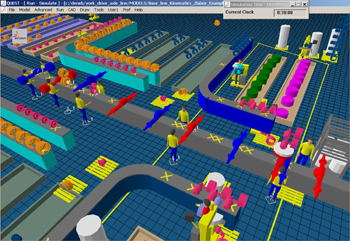Dassault Systmes (Nasdaq: DASTY: Euronext Paris: #13065, DSY.PA), today announced that ArvinMeritor has selected DELMIA QUEST and DELMIA Process Engineer (DPE) to evaluate its current assembly processes. A recent pilot project was implemented at ArvinMeritors York, SC, facility, which manufactures axles for heavy-duty trucks.
The demand for heavy-duty axles has increased recently, and this JIT facility had been challenged with determining the most economical way to keep up with growing demand. The ArvinMeritor team led by Scott Kuan, principal engineer of Analytical Mechanics, CVS Advanced Engineering, believed that simulation was the best solution to understand the existing production system for its pitfalls and its potential. We had done simulations several times already, but felt we could achieve better results with DELMIA tools.

DELMIA QUEST creates a complete 3D digital factory environment for process flow simulation and analysis, accuracy, and profitability. By feeding the existing as-is data from the existing axle assembly process into QUEST, ArvinMeritor could isolate and study individual assembly events to help determine where gains could be made within the process. This is a highly complex task as there are numerous axle assembly parts involved, each affected by many variables and then further complicated by the fact that ArvinMeritor produces a high variety of product on a daily schedule. Additionally, the cycle time between the different assembly stations can vary significantly.
By isolating each assembly station through QUEST simulation, we were able to identify where there were bottlenecks, Kuan said. We could then quickly play with different scenarios to see how we might improve the situation without ever having to try things on the production floor.
The what if scenarios built in QUEST, consisting of part variation data and the suggested modifications, were then associated with line balancing in DELMIA Process Engineer (DPE). DPE provides a comprehensive overview of the relationships between product, process and manufacturing resource data, including plant layout, which helps to avoid planning mistakes and obtain a precise overview, early in the process, of the required investment costs, production space and manpower.
Kuan concludes, Our team has been convinced that simulation was worth the investment, and we let the results speak for themselves. By adjusting the processes as identified in QUEST and balancing the line through DPE, we discovered that throughput could be increased by 20 percent, meaning the software pays for itself on the first project launch.

Add a Comment
No messages on this article yet